
We have all heard of ships gone missing, thoughts about Aliens and UFOs or maybe something to do with the Bermuda Triangle, but finding a ship abandoned is no less creepy and scary, ghost ships that tell terrifying stories.
Mystery continues to surround these ghost ships as to what happened on board and where their crew members disappeared. Did they die? Drowned? Ran away? From possible mutiny to accidental deaths, here are 15 ghost ships that tell a creepy story from past days to the present and beyond.
#1. Mary Celeste

Mary Celeste was an American merchant brigantine. It was discovered adrift and deserted on December 5, 1872 in the Atlantic Ocean, off the Azores Islands.
Mary Celeste was discovered by Canadian brigantine Dei Gratia in a dishevelled but seaworthy condition, under partial sail, with the ship’s lifeboat missing.
The log showed that the last entry to it was only 10 days earlier, as the ship left New York City on her way to Genoa on November 7, and when the ship was discovered, it was still in good condition and largely intact.
The cargo of the ship which included denatured alcohol was fully intact, and the captain’s and crew’s personal belongings were undisturbed. Adding to the mystery is the fact that none of crew members and people who had been on board were ever found or heard from ever again.
So, what might have happened on that ship? Here are some theories that were suggested:
Theories to ship abandonment
Theory #1: Pump congestion.
One theory for the abandonment of the ship that was suggested in 2007 by the Smithsonian Channel’s The True Story of the Mary Celeste, is that of possible pump congestion and instrumental malfunction.
The ship had been used to transport coal, which is known for its dust, before it was loaded with industrial alcohol. As the pump was found disassembled on deck, the crew may have tried to repair it of congestion. But, because the hull was fully packed, the captain would have had no way of judging how much water had been taken on-board when he was navigating rough seas. There’s also the belief that the chronometer was faulty as well, that meant that Briggs could have ordered abandonment, thinking they were close to Santa Maria when, in fact, they were actually approximately 120 miles farther west.
Theory #2: Foul play.
Evidence failed to prove theories of murder and conspiracy, but there was still the suspicion of foul play in the air, and there was also suspicion of insurance fraud. In 1931 an article in the Quarterly Review suggested that Morehouse could have lain in wait for Mary Celeste, then lured Briggs and his crew aboard Dei Gratia and killed them there.
However, the Dei Gratia left New York 8 days after Mary Celeste sailed, was a slower ship, and would have never caught Mary Celeste before it reached Gibraltar.
There is also a theory that Briggs and Morehouse planned a conspiracy together to share the salvage proceedings, but this is not the case as well, because if Morehouse and Briggs had been planning such a conspiracy and scam, they would not have devised such an attention-drawing mystery, and Briggs wouldn’t have left his own son Arthur behind.
Another theory of foul play talks about an attack by Riffian pirates, but that’s probably not the case as well, because according to this theory, pirates would have looted the ship, yet the personal possessions of the crew and the captain (including belongings of significant value) were left undisturbed.
A theory that was suggested by John Gilbert Lockhart suggests that Briggs had a religious mania attack, which caused him to slaughter all on crew members on board and then to committee suicide and kill himself. He then apologized and withdrew this theory.
Theory #3: Natural phenomena.
A third theory suggests that some extraordinary and alarming circumstance must have arisen to cause the abandonment of this ship.
There is a claim that Briggs abandoned ship after a sounding that, because due to malfunction of the pumps or other damage or mishap, had given a false impression to the crew that the vessel was taking on water rapidly when it actually did not.
A severe waterspout strike before the crew abandoned the ship could have explained the amount of water in the ship, and the ragged state of her rigging and sails. The low barometric pressure generated by the spout could have driven water from the bilges up into the pumps, thus leading the crew to believe that the ship had taken on more water than she had, and was in danger of sinking, causing the crew to evacuate the ship.
Other theories suggested the possible appearance of a displaced iceberg, the fear of running aground while becalmed, and also a sudden seaquake.
#2. MV Joyita
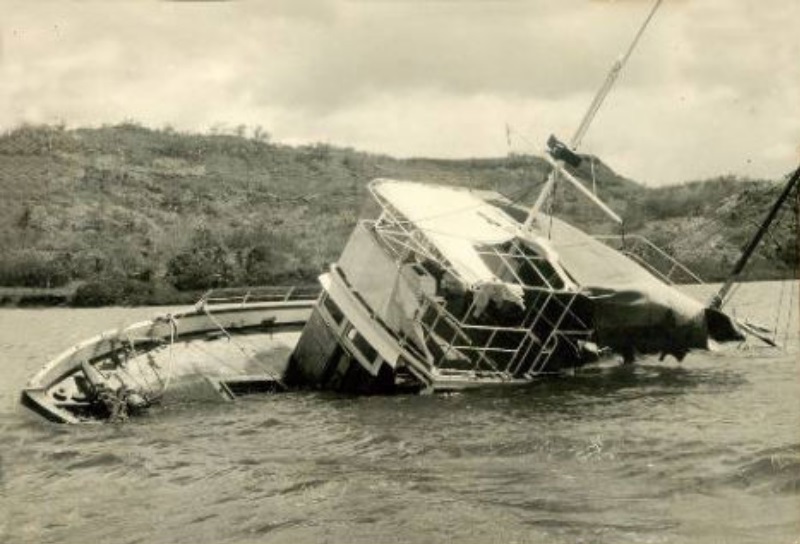
MV Joyita was a merchant ship that travelled with 25 passengers and crew members. It mysteriously disappeared in 1955 in the South Pacific and was found adrift with no one aboard. MV Joyita was found in very poor condition, the corroded pipes and a radio (although functional) had a range of only about 2 miles (3.2 km), and that is due to faulty wiring.
With that said, the extreme buoyancy of the MV Joyita made sinking nearly impossible, and investigators had no answers to why the crew members hadn’t just stayed on the and waited for rescue and help.
Theories to what might have happened
Theory #1: Injury of the captain.
Captain Miller should have had the knowledge about MJ Joyita’s ability to stay afloat, and this lead to speculations that the captain actually died or became incapacitated for some reason.
In this case, without the captain to reassure the other crew members on board, the other people may have panicked when the ship began to flood and thus decided to take the life boats. However, the cargo and equipment of the ship were missing, which does not correlate with this theory, unless the ship had been found later on when it was already abandoned and its cargo was stolen or removed.
Theory #2: Japanese involvement.
Another theory suggests that the ship had passed through a fleet of Japanese fishing boats during its sail, but the crew members of the MV Joyita may have seen something that the Japanese did not want them to see.
The theory explains that some Japanese forces from World War II that were still active were responsible for the disappearance of the crew, operating from an isolated island base.
Theory #3: Soviets and pirates
This theory suggests that a Soviet submarine kidnapped the crew members, or that sea pirates attacked the ship, killed all 25 crew members and stole the missing cargo.
Theory #4: Mutiny.
This theory suggests that events on the ship started due to the flooding from the broken cooling pipe and the failure of the pumps.
The mattresses that were found covering the starboard engine were used in order to stem the leak or to protect the electrical switchboard from spray kicked up by the engine’s flywheel as the water level rose. More than that, at the same time, the ship was getting hit by heavy swells and squally weather.
Captain Miller, who knew that the ship was unsinkable was desperate to reach his destination and clear his debt, pressed on. On the other hand, Chuck Simpson, and maybe other crew members, demanded Miller to turn back.
This event could have led to mutiny with Miller and the crew struggling, during which Miller sustained a serious injury. At this point the ship was already entering bad and heavier weather, with winds around 40 miles per hour (64 km/h), and only one engine working and water flooding the ship.
The flooding in the engine room could have caused the starboard engine to fail, cutting the ship’s electrical power. Now it was Chuck Simpson that was in control of the ship and he made the decision to abandon the MV Joyita, taking the navigational equipment, logbook and supplies, along with Captain Miller (who was injured) with them.
#3. Ryou-Un Maru
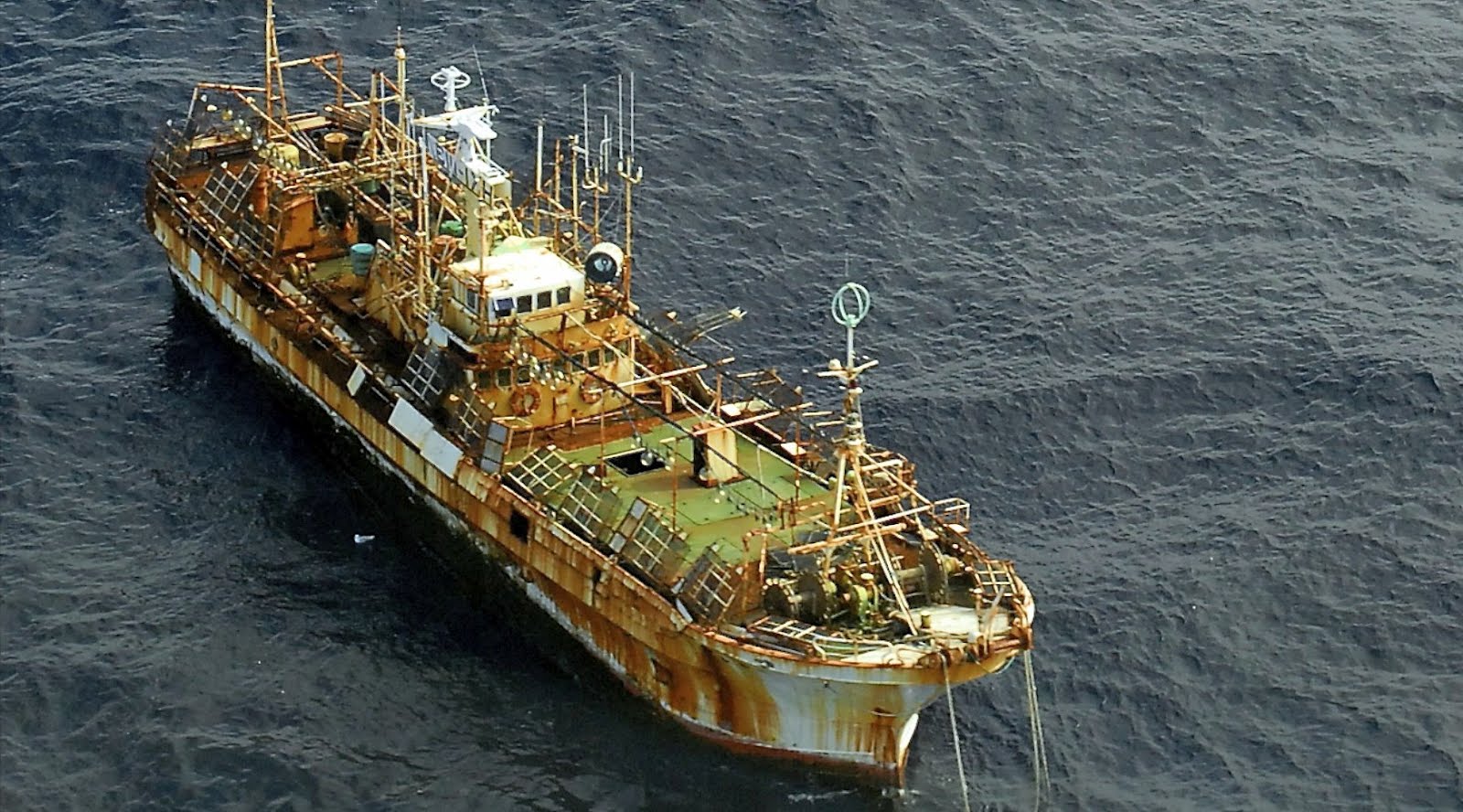
Ryou-Un Maru was a Japanese fishing boat. It washed away from its mooring in Aomori Prefecture due to the March 2011 Tōhoku earthquake and tsunami and drifted across the Pacific Ocean.
The Ryou-Un Maru was spotted a year later about 150 nautical miles (280 km; 170 mi) off the coast of Haida Gwaii, British Columbia by the Royal Canadian Air Force who did a routine air patrol.
The ship entered U.S. waters on 1 April 2012, and, after all attempts to salvage the ship failed, it was decided to sink it. The U.S. Coast Guard then sunk the ship on 5 April 2012 in order to prevent the ghost ship from becoming a hazard to navigation.
#4. HMS Resolute

HMS Resolute was a mid-19th-century barque-rigged ship of the British Royal Navy and was specially designed for Arctic exploration.
The ship was on a search expedition to discover the fate of John Franklin, who was a British explorer and had been lost in the Arctic. The HMS Resolute got trapped in the ice during its expedition therefore was abandoned in 1854, becoming a ghost ship. After being abandoned, it drifted 1,200 miles.
The ship was eventually recovered by an American whaler and was returned to Queen Victoria in 1856. The Timbers that the ship carried were later used to construct a desk which was presented to the President of the United States and is now located in the White House Oval Office.
#5. SV Bel Amica
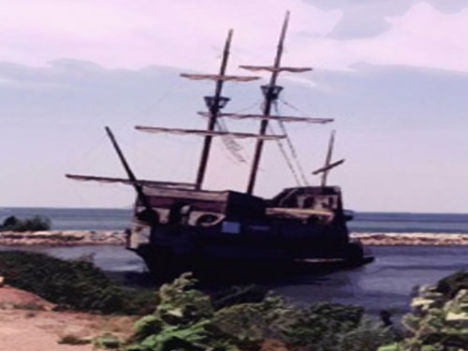
SV Bel Amica is a ghost ship that was discovered on August 24, 2006 off the coast of the Mediterranean island of Sardinia near Punta Volpe. The ship was discovered by the Italian Coast Guard with no one on board. The coast guard got on the ship and steered it away from rocks and shallow waters where it was drifting towards.
The Coast Guard discovered several items on board, including a flag of Luxembourg, French maps of North African seas, a pile of clothes and a half-eaten meal of Egyptian food.
The ship has been described as a “classic style” schooner, but one that was never seen in Italy before. After investigation, it was found that the SV Bel Amica had never been registered in Italy nor any other country. The only identification on the ship was a wooden tablet that read Bel Amica, probably a misspelling of “Beautiful Friend” (as it should say “Bell’Amica” in proper modern Italian).
The owner of the ghost ship was also found, Franc Rouayrux, from Luxembourg. It seems that the boat had been left anchored in deepwater, and Rouayroux planned to return to the ship after he address an emergency at home. However, it was suggested that this abandonment of the ship was really an attempt to avoid steep taxation of luxury vessels.
#6. SV Carroll A. Deering
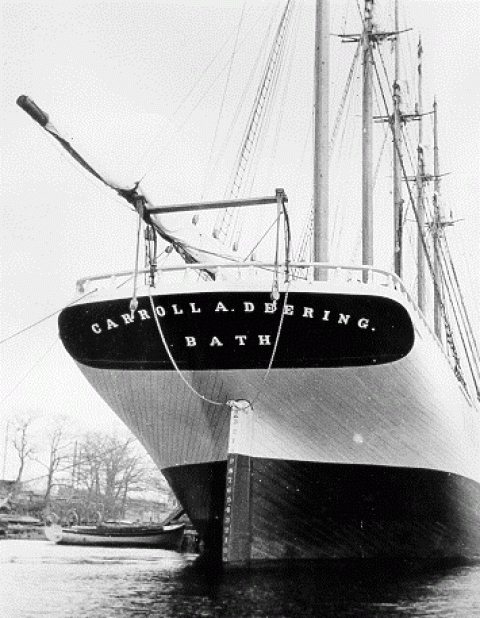
Carroll A. Deering was a five-masted commercial ship that was found in 1921 off Cape Hatteras, North Carolina. The crew of the SV Carroll A. Deering was never found.
The ship sailed from Puerto Rico on July 19, 1920 and arrived at Newport News, in order to pick up a cargo of coal and deliver it to Rio de Janeiro. The Captain of the ship was William H. Merritt. Merritt, who was a hero of World War I.
The SV Carroll A. Deering was last spotted with all crew on board when it passed through Cape Lookout Lightship, N.C. on Jan. 28, 1921, traveling from Rio De Janeiro back to Norfolk, V.a. after delivering the cargo successfully. Three days later, the ship was found, totally abandoned.
Theories to what might have happened
Theory #1: Hurricanes.
This theory suggests about a series of powerful hurricanes that ragged in the Atlantic, causing the disappearances. However, the ship was heading away from the path of these storms, and the manner of evacuation indicated a peaceful evacuation and not one of panic.
Theory #2: Piracy.
Another theory suggests that a group of pirates are to blame for the disappearance of the crew members, yet there were no evidence found for this theory, not any pirate ever caught in this case.
Theory #3: Mutiny.
There may have been some disagreements and bad blood between the Captain of the ship and the other crew members. This may have led to mutiny on board, yet nothing was ever proven about this theory as well.
Conclusion
No official explanation was ever offered for the disappearance of the crew. Again most concrete evidence suggests about mutiny on board of the ship, but again, nothing was ever proven. There is another possibility that the crew of the ship simply abandoned the vessel after it grounded on Diamond Shoals, but they were unable to row to shore and got swept out to sea and into certain death in their small open lifeboats.
#7. SV Kaz II
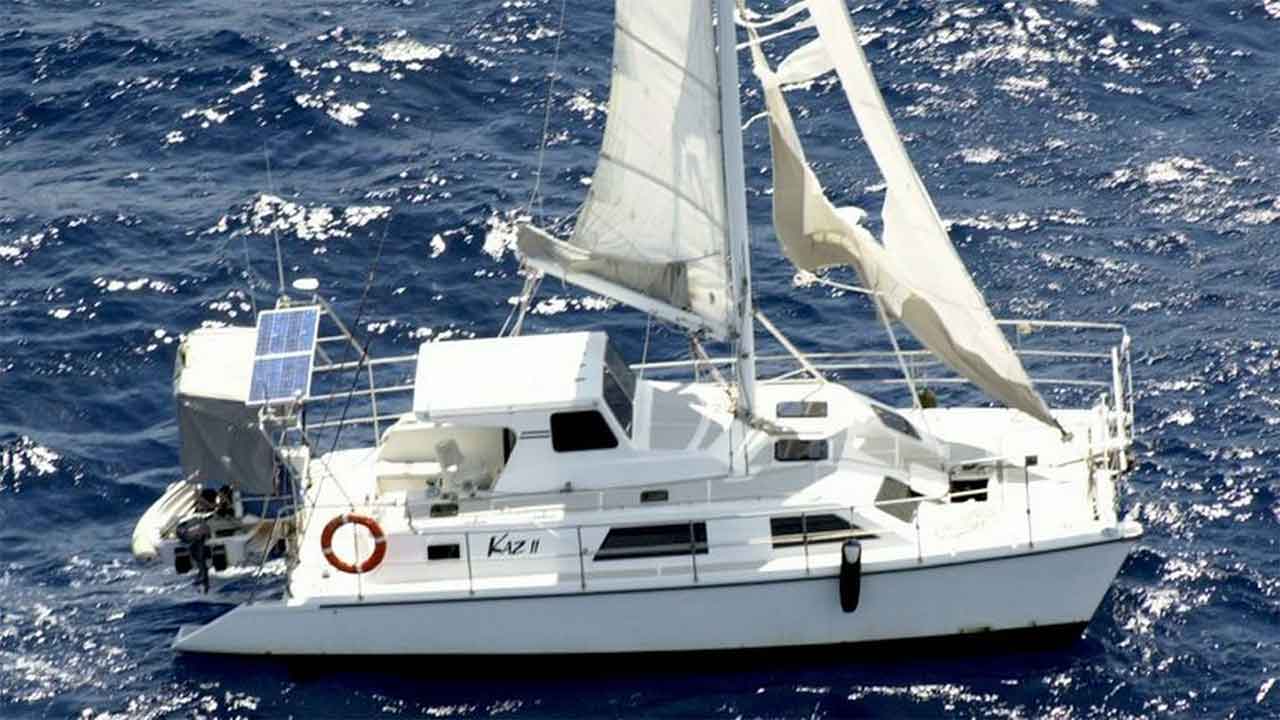
The Kaz II is a 9.8-metre catamaran that became a ghost ship when it was found on 20 April 2007 drifting 88 nautical miles (163 kilometres) off the north-eastern coast of Australia.
No one knows what happened to the three crew members that were on board of the yacht, and the circumstances in which they disappeared remain a mystery to this day.
The SV Kaz II was on its way to Townsville, Queensland on the first leg of a journey that was to take it around Northern Australia to Western Australia.
The first indication about a possible problem came on 18 April, when a helicopter reported spotting the ship adrift in the vicinity of the Great Barrier Reef, and that the crew members may be in trouble.
Speculation to what might have happened to all three crew members suggests that they may have fallen to the ocean when they were trying to untangle a fishing lure caught in the boat’s rudder. But, because wheatear conditions were bad, they may have fallen to the water and were unable to get back on board the ship, possibly drowning to death.
#8. SS Baychimo

SS Baychimo was a steel-hulled 1,322 ton cargo steamer that was built in Sweden in 1914. It was used for trade provisions for pelts in Inuit settlements along the Victoria Island coast of the Northwest Territories of Canada. In 1931, the SS Baychimo was abandoned and from that point on became a notable ghost ship along the Alaska coast. It was seen several times since its’ abandonment in 1931 and until her last sighting which was in 1969.
Reasons for abandonment
On 1 October 1931, at another end of a trading run, the SS Baychimo got trapped in pack ice with its’ cargo of fur. The crew members decided to abandon the ship, and travelled more than a half-mile of ice to the town of Barrow to seek shelter for two days.
However, while being abandoned, the ship had broken free of the ice, and by the time the crew of the ship returned, it wasn’t there anymore. On 15 October the Hudson’s Bay Company decided to send an aircraft and retrieve 22 of the ship’s crew, while 15 men remained behind.
The intention was to wait out the winter if necessary, so, they constructed a wooden shelter some distance away. But, on 24 November a powerful blizzard struck, and when the storm was over, there was no sign of the ship.
The ship’s captain assumed that it must have broken up during the storm and been sunk. However, only a few days later, an Inuit seal hunter told the captain that he had seen the ship about 45 miles (72 km) away from their position. The crew then tracked the SS Baychimo, but eventually decided that the ship will probably not survive the winter. Therefore, the crew decided to remove the most valuable furs from the ship and transport by air. The SS Baychimo was abandoned for good.
The SS Baychimo did not sink and over the next few decades people have managed to board on the ship several times, but each time they were unequipped to salvage the ship or had to leave it due to bad weather.
The last recorded sighting of the ship was in 1969 by a group of Inuit, 38 years after it was abandoned. Today, the fate of the SS Baychimo’s is unknown.
#9. SS Ourang Medan
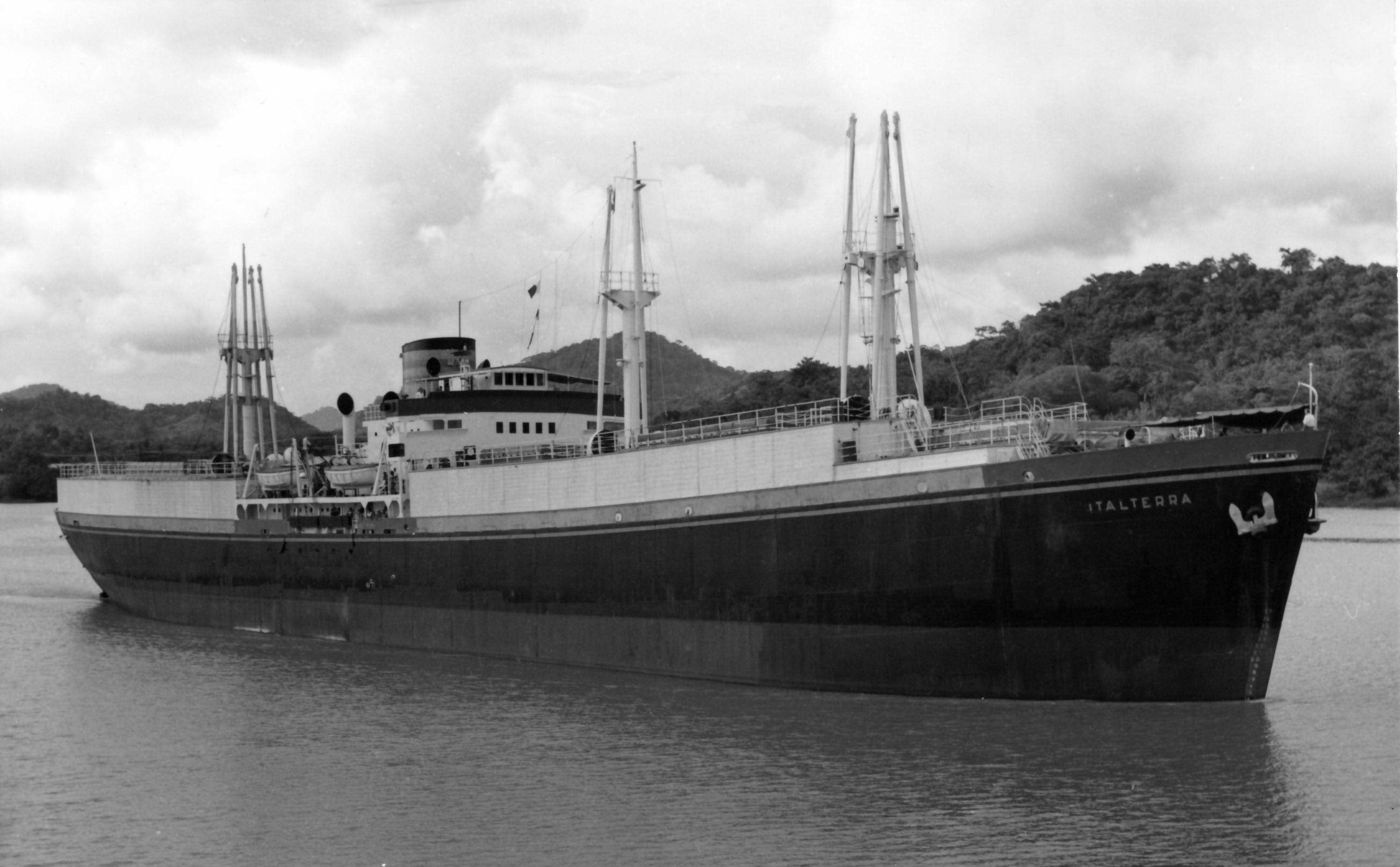
The SS Ourang Medan was a ghost ship that according to various undocumented sources, became a shipwreck in Dutch East Indies waters. This happened after the entire crew of the ship had died under suspicious circumstances. According to rescuers, the crew members of the ship had been scared to death. The story of the Ourang Medan has become a legend.
Around June 1947, two American vessels picked up distress messages from the SS Ourang Medan. They also picked up a creepy and troubled message sent from the ship in Morse code. Here is what it said: “S.O.S. from Ourang Medan * * * We float. All officers including the captain, dead in chartroom and on the bridge. Probably whole of crew dead * * *.” Then, after a few confused clicks, another last transmission was sent that said: “I die.”
After this chilling message, nothing was heard of again. When the crew of the American vessel that picked the transmission located the ship and got on board of it, they found corpses (including the carcass of a dog) everywhere, with the dead bodies found sprawled on their backs, the frozen (and allegedly badly-frightened) faces of the dead crewmen upturned to the sun above with mouths gaping open and eyes staring straight ahead, with the corpses resembling horrible caricatures.
There were no survivors on board the SS Ourang Medan, but also no visible signs of injuries on the dead bodies. When a fire broke out in the ship’s No. 4 cargo-hold, the crew of the American vessel was forced to evacuate the ship, preventing any further investigations to what had happened. Soon after, the SS Ourang Medan exploded and eventually sunk in the waters.
Theories to what might have happened
Theory #1: Hazardous cargo.
One theory suggests that the ship might have been involved in smuggling operations of chemical substances (combination of potassium cyanide and nitroglycerin or wartime stocks of nerve agents) and sea water might have entered the ship, which reacted with the cargo causing the release of toxic gases. This could have then caused the crew to succumb to asphyxia or poisoning. Then, the sea water might have reacted with the nitroglycerin, which caused the ship to explode.
Theory #2: Carbon monoxide poisoning.
Another theory states that an undetected smouldering fire or malfunction in the boiler system of the ship might have caused the accident. Carbon monoxide that escaped might have caused the deaths of all crew members, with fire slowly getting out of control, leading eventually to the ship’s explosion.
Theory #3:
Another speculation talk about an attack of UFOs or some kind of paranormal forces on the crew members before they all died. This theory surfaced after there was no explanation of a natural cause of death, the terrified expressions on the faces of the dead crewmen, and rumors that some of the dead were “pointing” towards an unknown enemy.
#10. SS Valencia
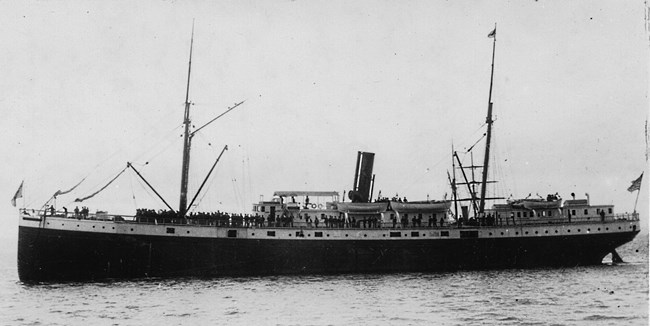
SS Valencia was an iron-hulled passenger steamer that was built as a minor ocean liner for the Red D Line for service between Venezuela and New York City.
The ship was built in 1882 and was a 1,598 ton vessel (originally 1,200 tons), 252 feet (77 m) in length. On Jan. 21, 1906, due to bad visibility that was caused by fog, the SS Valencia collided with a reef off the coast of Canada.
The accident caused chaos and panic on board of the ship and the crewmen accidentally lowered almost all the improperly manned lifeboats.
136 passengers and crew on the ship died and only 37 men survived on the remaining three lifeboats. In 1933, the lifeboat #5 of the SS Valencia was spotted floating in Barkley Sound. It was remarkably in a good condition.
6 months after the ship sank, local Native Americans claimed that they have seen a lifeboat with 8 skeletons in a nearby sea cave at the shoreline of Pachena Bay. There was no real explanation for the presence of the lifeboat in the cave, but the belief is that high tide had lifted the boat into the cave’s mouth.
Because of dangerous seas outside the opening of the cave, the lifeboat with its human remains could not be recovered. Local fisherman also scary sights of lifeboats that were being rowed by skeletons, skeletons which were the victims of the SS Valencia.
Another creepy sighting reported of sailors seeing waves washing over the phantom ship as human figures held on to the ship’s rigging for dear life. Similar apparitions were reported for years following the disaster.
#11. SV Zebrina

The SV Zebrina was an 189 tons schooner-rigged, three-masted sailing barge. It was built at Whitstable in 1873 and was first intended to trade on the River Plate in South America. The ship was discovered aground on the coast of France in 1917 with all crew members missing.
The ship made its way from Falmouth in October 1917. On board was a cargo of Swansea coal intended to arrive to Saint-Brieuc, France. Only two days later, the SV Zebrina was found ashore on Rozel Point, south of Cherbourg. The ship wasn’t damaged, but all crew members were missing.
Speculations to what had happened to the crew talk about abduction of the crew members by a German U-boat, but to this day, the fate of the crew of the SV Zebrina is still unknown.
The final resting point of the ship was Velder Creek in Portsmouth.
#12. Teignmouth Electron
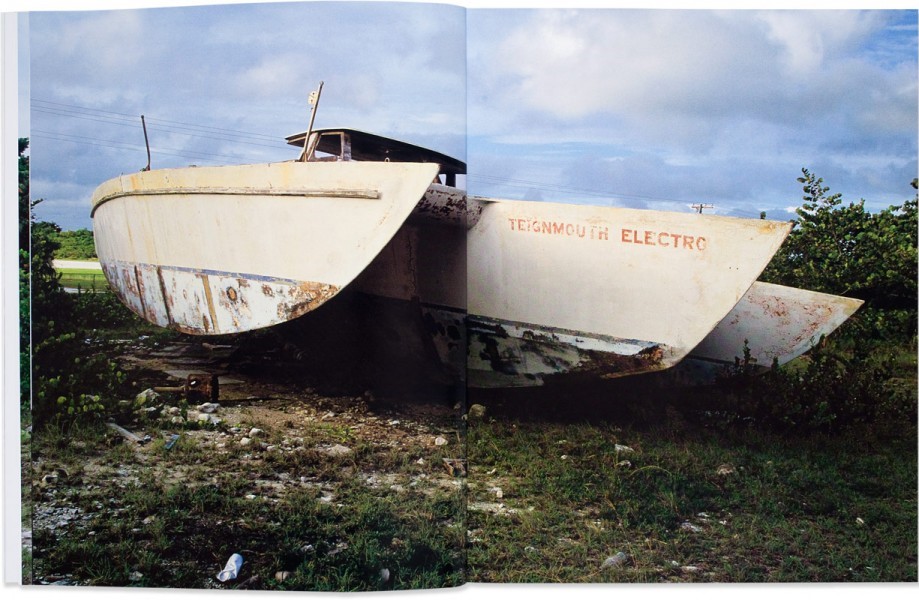
The Teignmouth Electron is a 41-foot trimaran sailing vessel that was designed for Donald Crowhurst’s attempt to sail around the world during the Golden Globe Race of 1968. The ship became a ghost ship after Crowhurst reported false positions and presumably committed suicide at sea. The journey of the ship was catalogued in the found logbooks, which also documented the thoughts, philosophy and at the end the mental breakdown of the captain.
The ship was found abandoned on July 10, 1969 at 7:50 am, by Royal Mail Ship Picardy about 1,800 miles from England, very close to where Mary Celeste ghost ship had been found nearly 100 years before.
On the shup were detailed logbooks that outlined forged coordinates, a logbook with true coordinates, and 25,000-word manifesto of the captain with “instructions” written directly to humankind on attaining transcendence. After examination and analysis of the found logbooks, it was concluded that the ship had been abandoned 9 days before it was discovered abandoned.
#13. Jenny
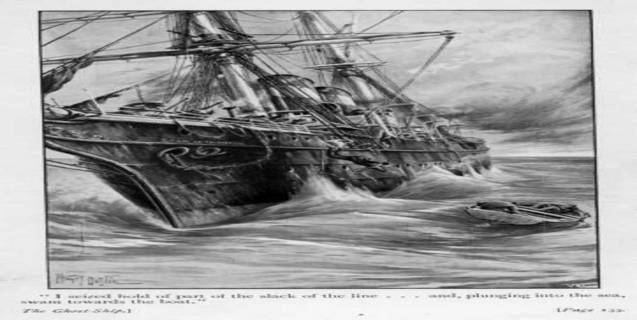
The Jenny was an alleged English schooner and some kind of a legend. The story of the ship is that it got frozen in 1823 in an ice-barrier of the Drake Passage and was discovered only in 1840 by a whaling ship.
Due to the Antarctic cold, the bodies of the crew members aboard the ship were found preserved. The earliest known source for this legend appears to be an anonymous article that was published in 1862 in Globus magazine, which was a popular German geographical magazine.
#14. SV Ocean Wave
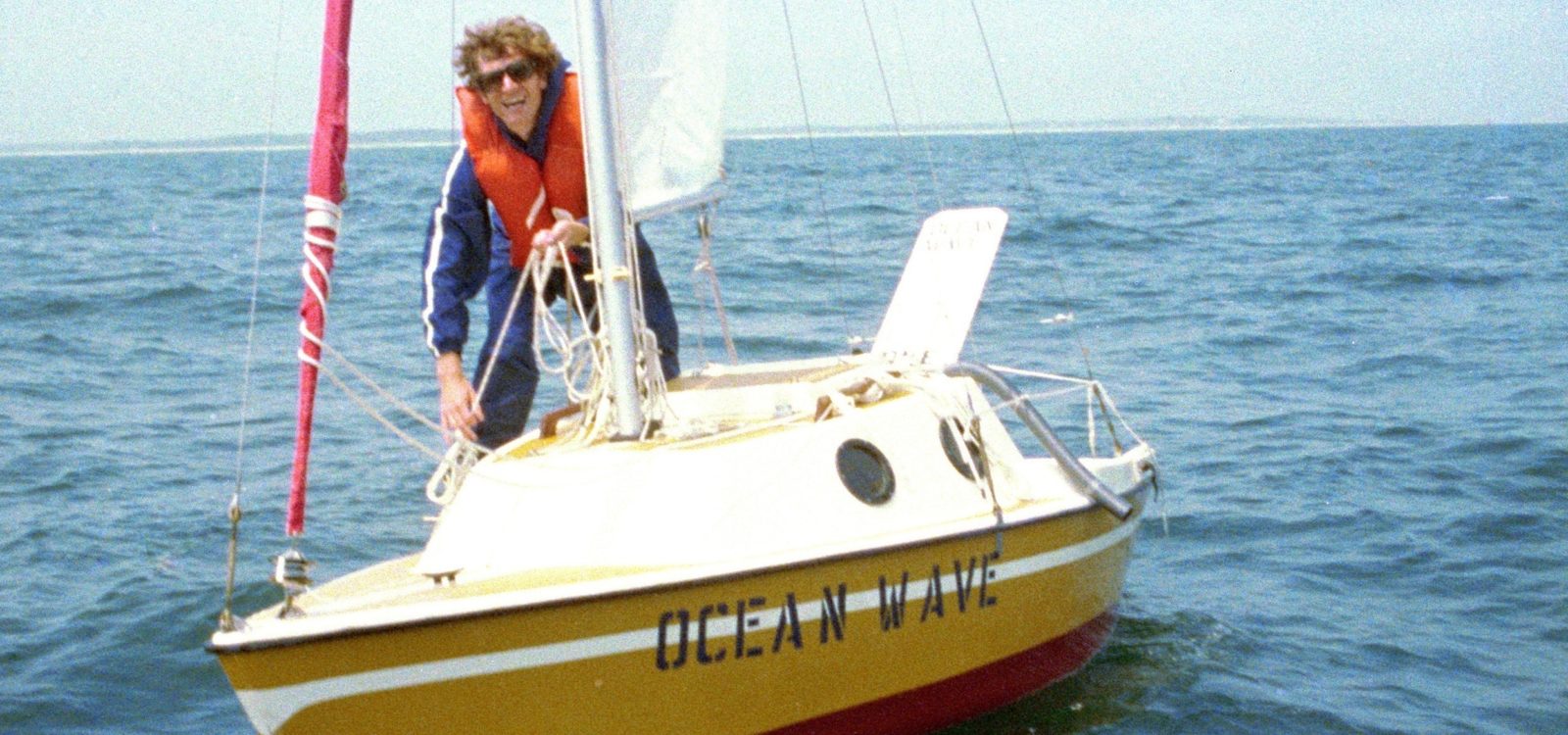
In 1975, Bas Jan Ader got lost at sea with his vessel, the SV Ocean Wave. He was trying single-handedly to cross the Atlantic in his 13-foot-long (4.0 m) small cruiser. 3 weeks into the journey, radio contact broke off and Ader was presumed lost at sea.
The vessel was eventually found 10 months later as it was floating half submerged 150 miles (240 km) west-southwest of the coast of Ireland. However, Ader’s body was never found. The boat was recovered by a Spanish fishing boat that found it, and was taken to Coruña. Some time later however, the vessel got stolen.
#15. High Aim 6
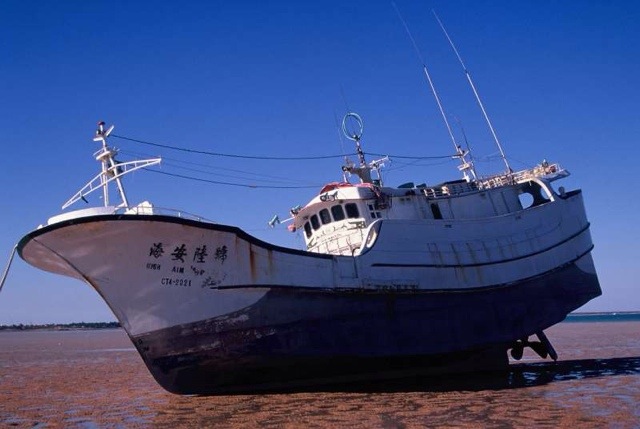
High Aim 6 started its journey from port Liuchiu in southern Taiwan on 31 October 2002, and was later found on 8 January 2003 without any of its crew members as it was drifting in Australian waters.
Tsai Huang Shueh-er who was the owner of the ship, was the last to speak with the captain in December 2002. The ship was registered in Taiwan and flew under an Indonesian flag.
One Indonesian crew member was eventually tracked and admitted that the captain and the engineer had been murdered, but what really happened, how it happened and what was the motive of the murders remain a mystery. Speculation says that there was a mutiny on ship, but the cause to for it is unknown.
There was no real reason to abandon the ship, no signs of distress were found, no signs of struggle were found, and the crew’s personal belongings were still on board. Also, the ship had plenty of fuel, so again, there was no reason for abandonment.
Theories to what might have happened
There is only one reasonable theory to what might have happened on board the High Aim 6 and it’s mutiny.
Speculations are that on December 8, members of the crew had killed the captain and the engineer and then continued back to their homeland. However, the motive and reasons for the murders remain unclear and unknown.
A year before, an Indonesian military boat discovered the Hairisheng 6, which was a Taiwanese fishing boat, empty and abandoned. Three crew members were arrested (of a total of 10) and eventually confessed to murdering the captain and the engineer.
We hope you enjoyed this article and would love to hear your thoughts and insights, so comment below what do you think happened, what came to your mind and do you plan going to sea now and look for ships. Having said that, there is also a chance we’ll hear about new lost ships in the future, so stay tuned to article number 2 on the subject…maybe.



